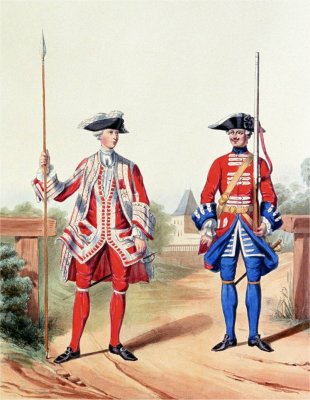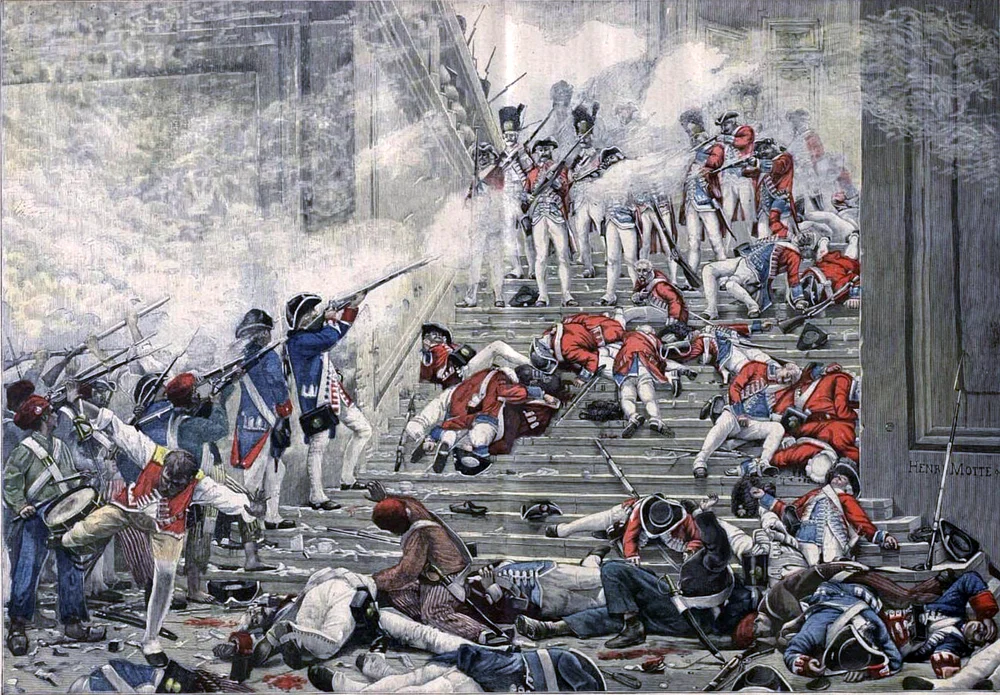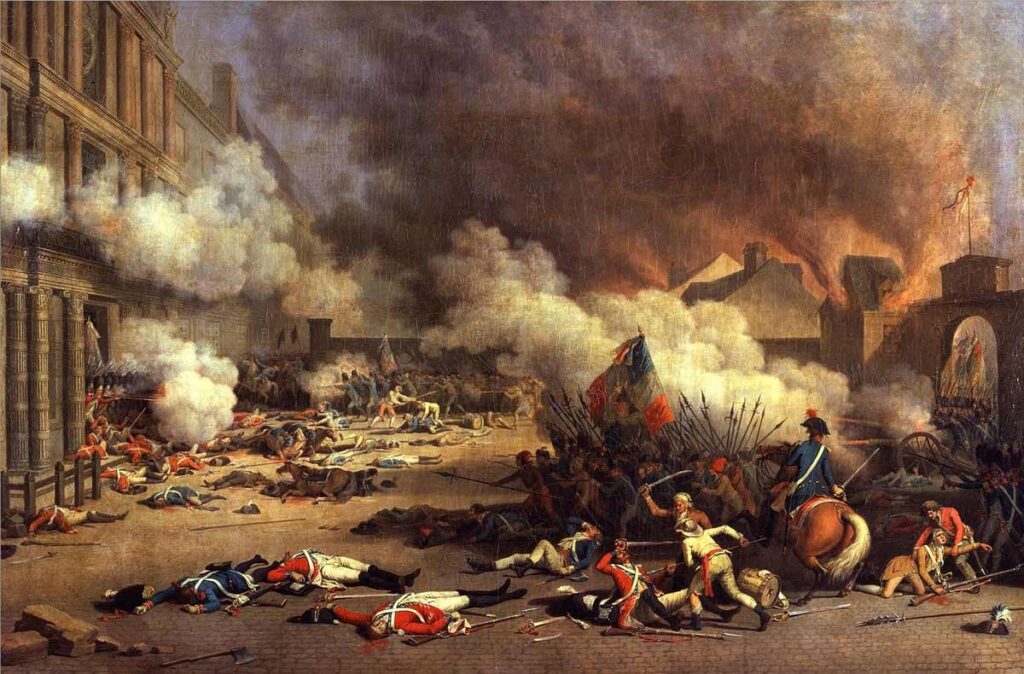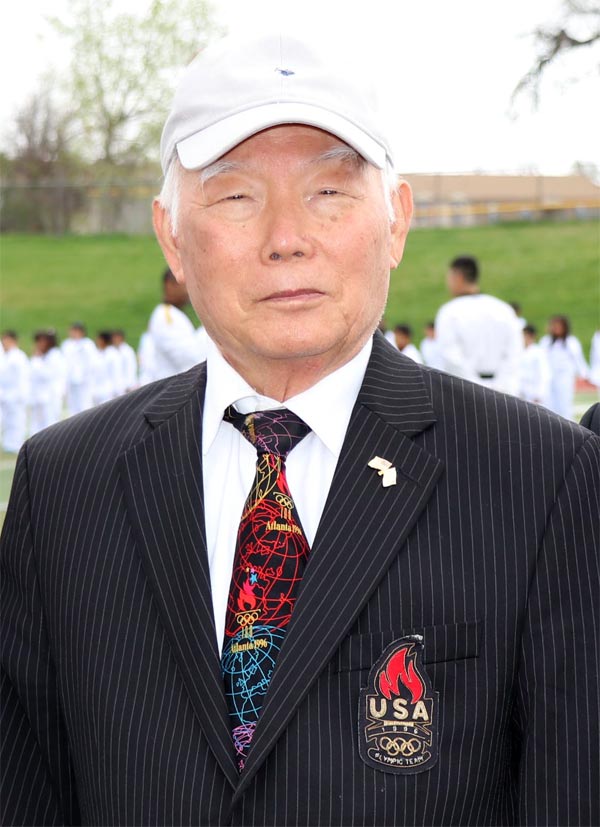Lessons from History
600 Swiss Guardsmen chose to die fighting rather than to walk away free at the storming of the Tuileries Palace during the French Revolution. Why did they do it?
Editor’s note: Taekwondo Kangdukwon Great Grand Master Hwa Chong, a lifelong student of economics and military history, often cites moments in history that illustrate and highlight genuine martial arts spirit. He cites the hopeless defense of Tuileries Palace by 900 Swiss Guards facing 20,000 attackers in 1792 as one such instance.

Two different units of Swiss mercenaries had long performed guard duties for the Kings of France: the Hundred Swiss (Cent Suisses) served in the Palace essentially as bodyguards and ceremonial troops, and the Swiss Guards (Gardes Suisses), who guarded entrances and outer perimeter.
The Swiss mercenaries were regarded as elete formations that a European monarch could lease from a Swiss canton for a good price enhanced by fearsome reputation of Swiss Guard formations. These formations traveled, served and fought tenaciously as a body of men intensely aware of their individual reputations as as well as Switzerland’s international reputation — which they were unwilling to stain or sacrifice even to save their own lives, as evidenced by the famous Storming of the Tuileries Palace during the French Revolution on August 10th 1793.
“We have decided to surrender our arms only with our lives.”
-letter home written on 1 August 1792 by a Swiss Guardsman
Despite having been ordered by the King of France to surrender rather than resort to violence, the 600-man Swiss Guard as a body and as a band of brothers instead decided weeks in advance to fight to their deaths rather than to bear the stain of dishonor upon themselves, their families and their nation.

The following account by Harrison Mark is drawn from the World History Encyclopedia:
The Storming of the Tuileries Palace, also commonly known as the Insurrection of 10 August, was a defining moment in the French Revolution (1789-99) that saw the armed revolutionaries of Paris invade the residence of King Louis XVI of France (reigned 1774-1792) and massacre his Swiss Guards. The event effectively abolished France’s monarchy.
Louis XVI had risen at the crack of dawn to inspect troops gathered in the palace courtyard. In full military dress, the king was greeted by loud applause from his loyal Swiss Guards, but also by angry shouts from the gathered National Guardsmen, who chanted “No more veto!” Warily, the king withdrew inside, where he was informed by an official, Pierre Louis Roederer, of the coming insurrection. The king consented to Roederer’s suggestion that he and the royal family take shelter in Le Manège, the meeting place of the Legislative Assembly. But before he left, Louis wrote a note ordering the Swiss Guards to surrender rather than resort to violence.

Some of Louis’ men were happy to surrender. The National Guardsmen who had been posted in defense of the palace fraternized with the demonstrators and invited them onto the palace grounds. But the Swiss Guards were not so ready to capitulate. The Swiss were extraordinarily loyal to their posts, and on 1 August one of them had even written home that “we have decided to surrender our arms only with our lives” (Fraser, 374).

Storming of the Tuileries Palace
So, when the demonstrators approached the palace itself, they were met with the Swiss, silent, motionless, and guarding the entry to the palace. The two groups stood facing each other for some time; after a while, some of the demonstrators came forward amicably, believing some of the Swiss had indicated gestures of peace. They were met with a volley of gunfire from the Guards. As at the Bastille, the demonstrators believed they had walked into a trap, and chaos ensued.

Storming of the Tuileries Palace during the French Revolution, 10 August 1792. Oil on canvas by Jean Duplessis-Bertaux, 1793.
For hours, a bloody battle would rage within the confines of the Tuileries Palace. Fournier ‘the American’ led the first wave of counter-attack, with the fédérés from Marseille in the front line. The attackers greatly outnumbered the defenders; there were 900 Swiss Guards defending the palace alongside 2,000 National Guardsmen of dubious loyalty. By contrast, the attackers were over 20,000 strong. Still, the Swiss put up a fight, holding off several waves of Commune forces. Yet, strength in numbers eventually prevailed, and the Swiss were overwhelmed.
Visit World History Encyclopedia to read the full account by author Harrison Mark.
Commentary by Hwa Chong

Why did they do it?
Hwa Chong cites this famous instance and explains it as a rare instance of group spirit when a body (be it a tribe, nation, company or club) acts in unison through passionate commitment, at times even unto death. How far removed it is, he says, to the openly self-seeking mindset that has become more common today among modern martial sports enthusiasts.
Clubs, dojangs and entire federations have gravitated to become spiritless social institutions whose members try to out-do one another instead of striving to succeed together.
In Kangdukwon thought, one’s mindset plays a critical role in providing the motivation that drives them to undertake and often achieve greatness in their field, whether it be as a fighting units in battle or as teams pursuing Olympic gold or applied individually to excell in whatever fields in life imaginable.
Taekwondo Kangdukwon masters continue training well into their seventies, while also continuing to influence and support their juniors. Their influence is important, since standard Olympic taekwondo rules take little or no regard for the character of its champions, but only their performance as the measure of its competitions.
Kangdukwon stresses the role of generosity as its underlying ethical foundation both in theory and in action. This in turn leads eventually to self-examination, reassesment and ultimately to one’s evolving to the next level throughout a long and fruitful life. Taekwondo is a life-long journey — we never give up!
The above was expressed to me by GGM Chong by phone on the morning of 8 December, 2023. He asked me to publish it and share his insights including this instance.
Patrick Harrigan
8 December 2023